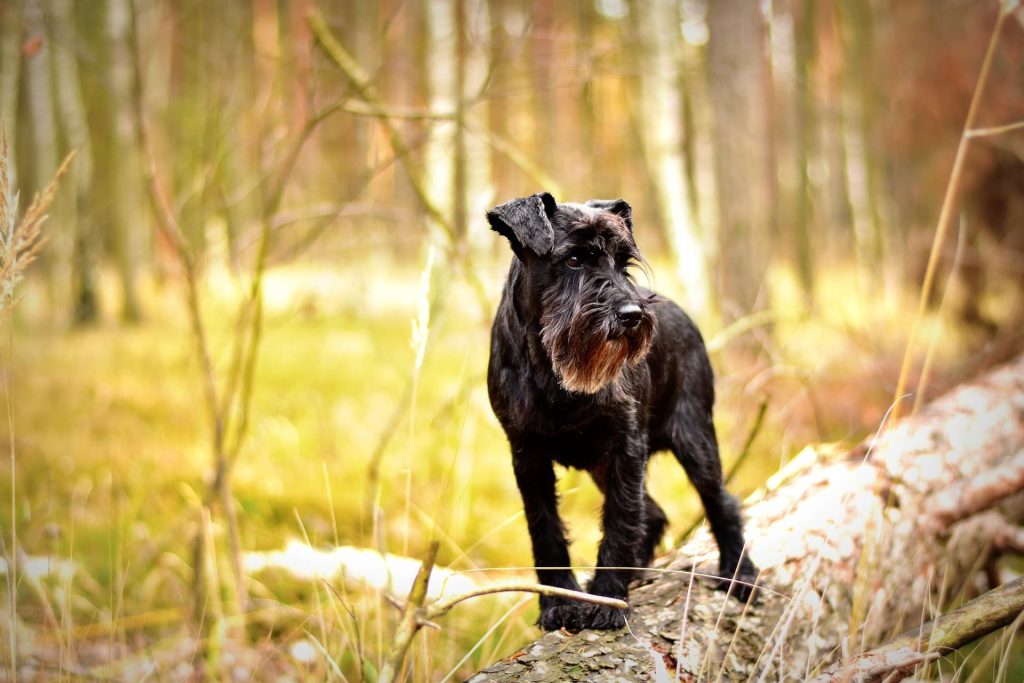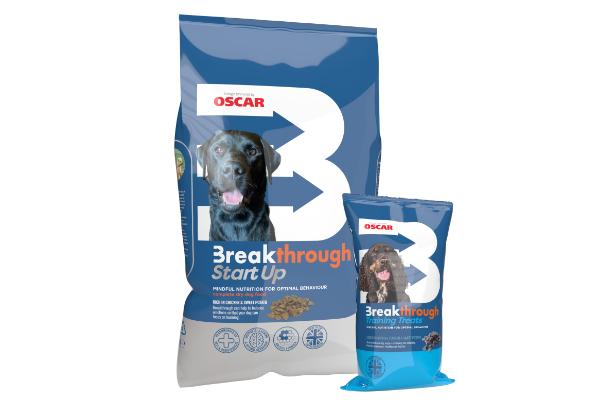Estimated reading time: 8 minutes
Bob the miniature schnauzer arrived at his new home in February 2020. He was an easy puppy. Having spent his first 8 weeks of life with his mother and 4 other puppies Bob had begun to learn important canine social skills and now it was time for him to learn about the environment and how to interact with humans.
From the first night in his new home, Bob slept quietly and calmly in his crate and within 3 weeks was house trained.
Early puppy education
Once Bob had settled into his new surroundings and completed his vaccinations, his education began. He went out for walks and met the neighbourhood dogs and local people, as well as all the visitors who came to see him. Bob went to the local pub where he learnt to interact calmly with strangers and other dogs.
Bob’s behaviour before lockdown
Having had lots of social interaction, Bob learnt some manners when greeting people outside and greeting visitors to the house. Of course, he was bouncy and a bit giddy but had learnt to sit and wait to be greeted. Bob was used to travelling in the car (safely restrained in his travel crate), was happy to be left for short periods (again in his house crate), was sociable with other dogs and was generally developing into a lovely dog.
Bob’s behaviour during lockdown
Bob the miniature schnauzer was 3 months old at the beginning of lockdown. A critical time in his development. Bob, along with his owners, had limited opportunities to socialise and meet people and other dogs when the COVID-19 restrictions were imposed in March. There were no more visitors to the house, no trips to the pub and only short periods of exercise with no interaction with other dogs and people. Bob could not practise the manners and lessons he had learnt during his first few weeks of his education.

Even though his owners were unable to continue Bob’s education in the way they had started, they remained committed to providing him with plenty of mental and physical stimulation. They introduced interactive games in the house and garden as well as practising basic obedience exercises.
To help make up for the lack of social interactions, Bob’s owners took him out in the car when going to the supermarket for essential supplies. One of them would sit with him with the tailgate lifted, so that Bob could still see and hear people, cars and the general hustle and bustle of a supermarket carpark.
Bob was a happy and contented young dog. He continued to sleep quietly in his crate overnight and was relaxed in his crate in the car. He was fully house trained and a joy to own, but as the COVID-19 restrictions were lifted and life returned to the new normal, problems began to develop.
Bob’s behaviour after lockdown
Bob the miniature schnauzer was now 6 months old and friends and family wanted to come and see him again. Bob was a nightmare! He appeared to have forgotten all his previous training and visitors were met by a frenzied young dog who was clearly over excited, jumping up, whining, and spinning. Bob had no self-control!

Naturally, Bob’s owners were mortified! What had gone wrong? Bob had not seen any visitors for many weeks. He had been able to watch people from a distance when in the car but was unable to interact with them. Although it had not been obvious to his owners, Bob had become more and more frustrated at not being able to greet people. Now he was able to meet people once again, Bob was so excited he was unable to contain himself and became a whirling dervish.
There was another problem! Although Bob was still happy to sleep in his crate throughout the night, during the day he could no longer be left alone. His owners had been working from home during lockdown and now that they were leaving the house once again, Bob was frantic when left on his own. If Bob was put into his crate, he would scream but was still fine overnight.
Bob the miniature schnauzer had become over attached and dependent on his owners. Prior to lockdown he had become accustomed to short periods of isolation during the day, but during lockdown, his owners had become his constant and only companions and now any form of separation from them caused him significant distress.
Bob’s owners also noticed that he had become more reactive to noises outside the house. Living close to a school, there had been plenty of traffic noise and children passing by, and Bob had got used to this. But whilst the school was shut the road had become quiet. As the school re-opened and the children returned Bob appeared to be worried by the general increase in noise level.

Bob’s rehabilitation
Bob’s owners were quick to seek help from a dog behaviour specialist via their vet. Various methods and techniques were discussed but given Bob’s extreme behaviour it was decided (with the veterinary surgeon’s agreement) to begin feeding Breakthrough dog food to help reduce his reactivity and anxiety.
Bob’s owners introduced the Breakthrough dog food over a period of days. Within a couple of weeks, Bob’s anxiety levels and over excitability had reduced significantly and his owners were able to begin his new training regime which included:
Self-control exercises
Based on Sian Ryan’s self-control methods, Bob learnt how to wait for food and not grab for treats, as well as learning manners around doorways and how to settle both inside and outside.
These exercises enabled Bob the miniature schnauzer to understand the consequences of his actions and his owners were then able to begin teaching him to meet and greet people with the same manners he had previously learnt.
Desensitisation and counterconditioning exercises
Desensitisation means ‘to become less sensitive’. To have no reaction/emotional response to a specific trigger.
- For Bob, this technique was used to help him overcome his fear of noises outside the house and to enable him to become relaxed when left alone.
- Using one of the excellent sound recordings which have been made to help dogs that are fearful of loud noises, Bob’s owners began playing the recording at an extremely low level. Bob gradually habituated to the low intensity noises.
- By steadily increasing the intensity, making sure that Bob did not react, Bob soon stopped becoming emotionally aroused, even when the sounds were at a normal level.
- The same process was used to teach Bob to remain calm when left alone. Bob’s owners started desensitising him to their movements. They began standing up and sitting down again.
- Bob soon realised that these movements were irrelevant, and his owners were able to progress by leaving the room and doing something which Bob could not be involved in, such as washing the dishes.
- In time, Bob became accustomed to his owners moving around the house and they were able to begin shutting the door and leaving the room without him becoming anxious.
- In addition, Bob’s owners desensitised him to cues which might predict them leaving the house. They picked up their car keys regularly during the day, locked and unlocked the house door, put their coat and shoes on and then took them off.
- Bob the miniature schnauzer soon learnt that these cues did not mean anything, and he remained relaxed and calm. Eventually, Bob’s owners were able to leave the house for a short time without Bob becoming distressed and screaming.
Counterconditioning
To condition means to teach, and counter means to change. So, counterconditioning means to learn a new association.
For Bob, the negative emotional response of being left alone was changed to a positive by providing him with something pleasant when he was on his own.
Bob was given a special toy when he was in his crate. This toy was only available to him whilst in his crate and was removed as soon as he came out of his crate. At first, even though Bob was relaxed in his crate overnight, during the day his owners did not close the crate door, but continued with their desensitisation process of moving around the house etc.
Soon Bob associated being in his crate as a very pleasant experience because it signalled he would get a special toy. This combined approach helped Bob to remain relaxed and contented when left alone:
- Desensitisation = no emotional arousal when owners leave
- Counterconditioning = negative emotional state changed to a positive emotional state by use of a high value toy when left in the crate.

Bob the miniature schnauzer is now the happy young dog his owners wanted. His rehabilitation was undoubtedly helped by Breakthrough dog food. Breakthrough is the complete, dry dog food version of Val Strong’s serotonin enhancing diet.
Serotonin is known to reduce behaviours such as aggression, anxieties, over excitability, and reactivity by raising overall mood state and promoting more positive emotional responses.
Supporting good behaviour with Breakthrough Dog Food
Would you like to learn more about how Breakthrough can help the balance of behaviour and emotions of dogs in your care?
Visit our Veterinary Resource page and learn more about how Breakthrough can help to support your veterinary practice.


